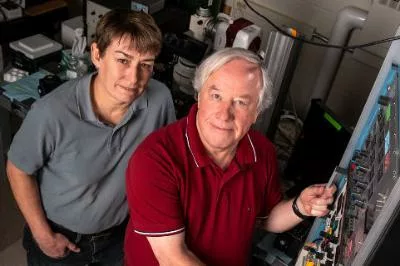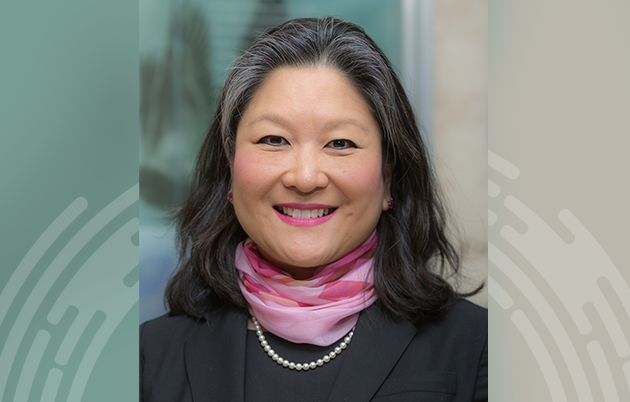Fettiplace’s explorations of the physiology of the inner ear earned him one of the highest awards in science. In September 2018, he became a Kavli Prize Laureate in a ceremony held in the Oslo Concert Hall, where the Nobel Peace Prize is awarded. He received a gold medal from King Harald of Norway and shared the $1 million neuroscience prize with two colleagues in hearing research, A. James Hudspeth, MD, PhD, of Rockefeller University, New York, and Christine Petit, MD, PhD, of the Pasteur Institute, Paris. The award, established in 2008 and given every two years, is considered a portent of a future Nobel Prize. The ceremony, co-hosted by Alan Alda, was broadcast on Norwegian television and capped a week of festivities that included lectures, a concert, meetings with young scientists and a dinner in a palace.
Much of the work for which Fettiplace earned the Kavli Prize took place in a corner lab on the street level of the Medical Sciences Building on the UW–Madison campus.
An Englishman who can trace his heritage to the Norman conquest in 1066, Fettiplace earned his doctoral degree at Cambridge University in England. He began his career at Stanford University in California, studying photoreceptors in the retinae of turtles.
On returning to Cambridge University, he switched to studying hearing, using turtles because they were technically easier than mammals. He made his early discoveries in the turtle cochlea.
Fettiplace already was a fellow of the Royal Society of London when, in 1990, he joined the faculty of the School of Medicine and Public Health, where he became the Steenbock Professor of Neural and Behavioral Sciences. He says he was excited to join a department filled with renowned auditory researchers, such as John Brugge, PhD; Joe Hind, PhD; Bill Rhode, PhD; Tom Yin, PhD; Dan Geisler, PhD; and Donata Oertel, PhD, in the Department of Neuroscience (formerly the Department of Neurophysiology).
Most of Fettiplace’s neuroscience career has focused on the workings of the ear, understanding how hair cells in the cochlea translate the vibrations of sound into the electrical signals that are the currency of the brain. One of his most important early discoveries was that auditory hair cells are designed electrically to pick up a specific range of frequencies and arranged along the cochlea like the keys of a piano, with high frequencies at one end and low at the other.
“Just as a prism separates white light into the colors, the cochlea behaves like an acoustic prism; it takes wide bands of noise, and the hair cells separate the sound into its component frequencies,” Fettiplace explains.
The hair cells detect motion of the membranes inside the cochlea and convert them to electrical signals. But the movements that stimulate cochlear hair cells are very small, a thousandth the diameter of the hair on a human head. So he had to invent new methods and techniques to record what the cells were doing, and he did so, in part, because no one else had.
“People think scientists develop hypotheses and design experiments to prove them. That isn’t always how science works,” says Fettiplace, who is a fellow of the Royal Society and of the American Academy of Arts and Sciences. “You try to get a new measurement, and if you’re lucky, you stumble onto something. That’s how we discovered electrical tuning; we just wanted to be the first to make a recording from the hair cells.”
Oertel, chair of the Department of Neuroscience and a fellow hearing researcher, calls Fettiplace “tremendously creative at designing new techniques with which to study the function of the delicate inner ear.”
“He pioneered numerous techniques with which he could address problems unique to the ear,” she says. “He published his findings in a series of ground-breaking papers that are as elegant in their approach, as beautiful in their writing, as rigorous in their analysis and as meticulous in their scholarship as any I have read.”
In recent years, Fettiplace has switched his research from turtles to mice to exploit the many mouse strains that are deaf mutants. His current research is aimed at understanding the ion channel proteins that open and close in mammalian hair cells. He and Maryline Beurg, senior scientist in his lab, recently published evidence in Nature Communications suggesting that a protein called transmembrane channel-like protein isoform-1 (TMC1) creates the channel that converts the mechanical stimuli into electrical signals. In the small world of hearing research, Beurg previously worked in a French lab overseen by Petit.
The Kavli Prize committee — which also awards prizes in astrophysics and nanoscience — noted that together, the award-winning hearing researchers “provided fundamental new insight in how our inner ear transforms sound into electrical signals — the basis of hearing — and have unveiled genetic and molecular mechanisms underlying hearing loss… between them, the three laureates have helped unravel the sense of hearing.”


